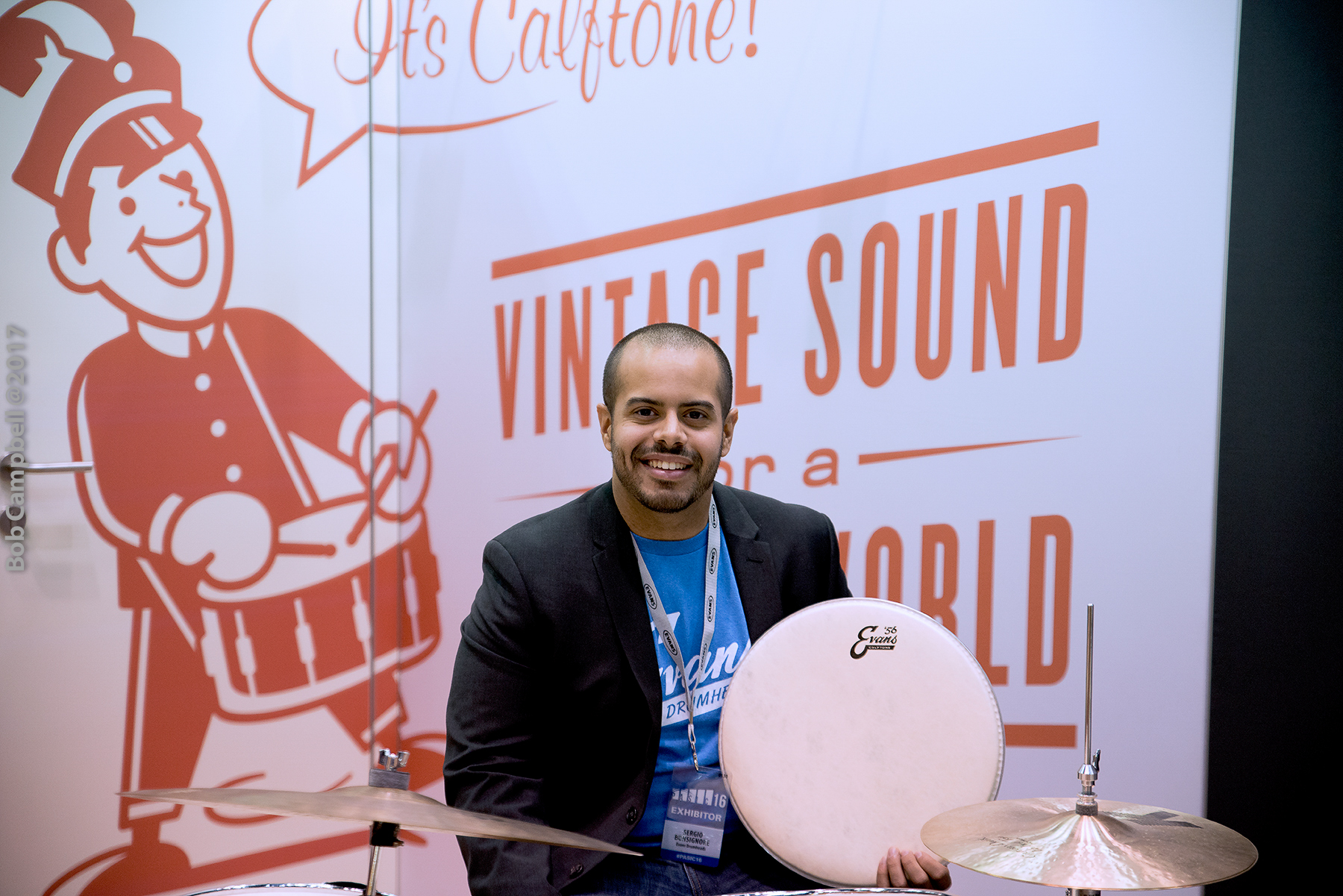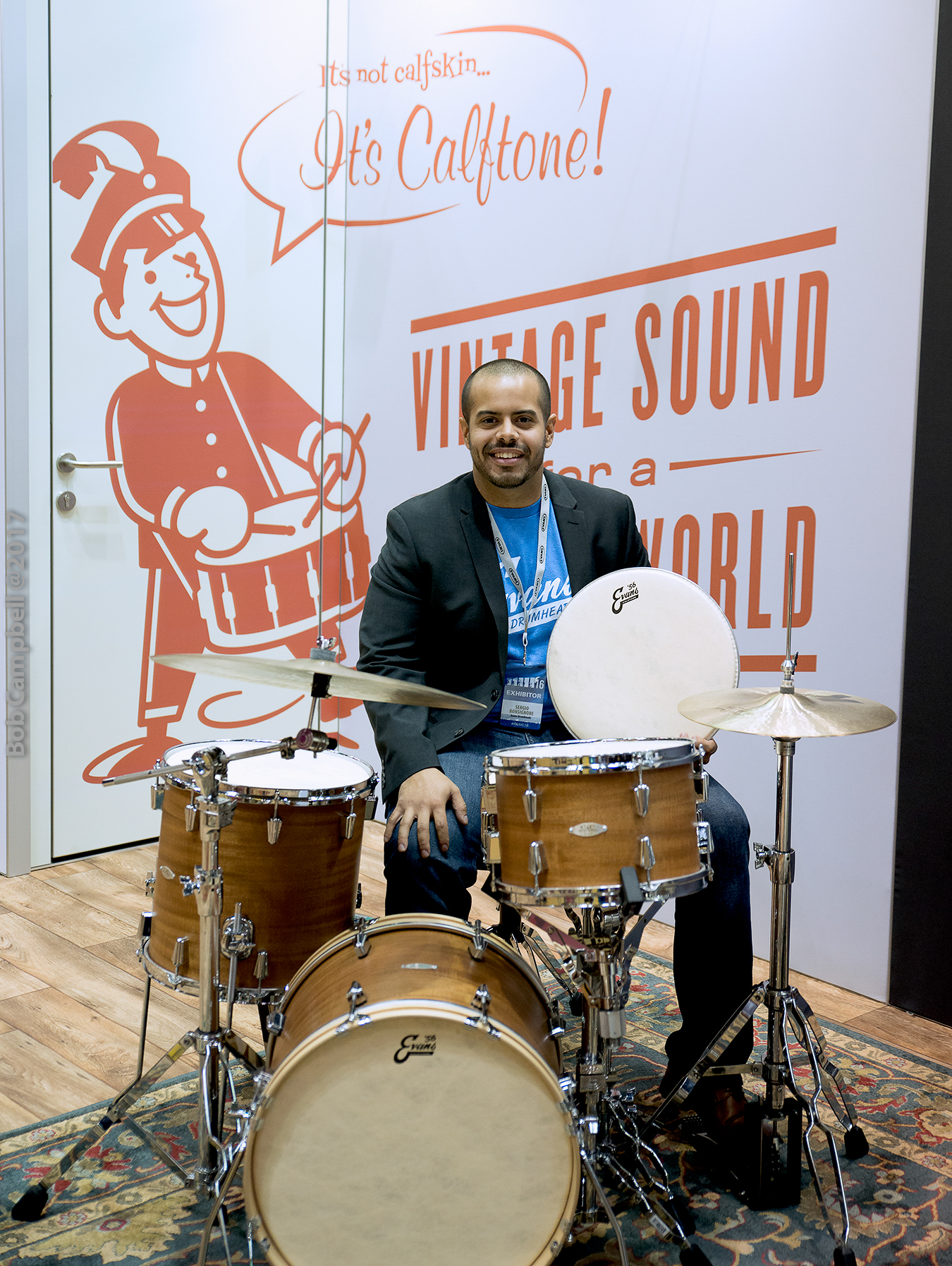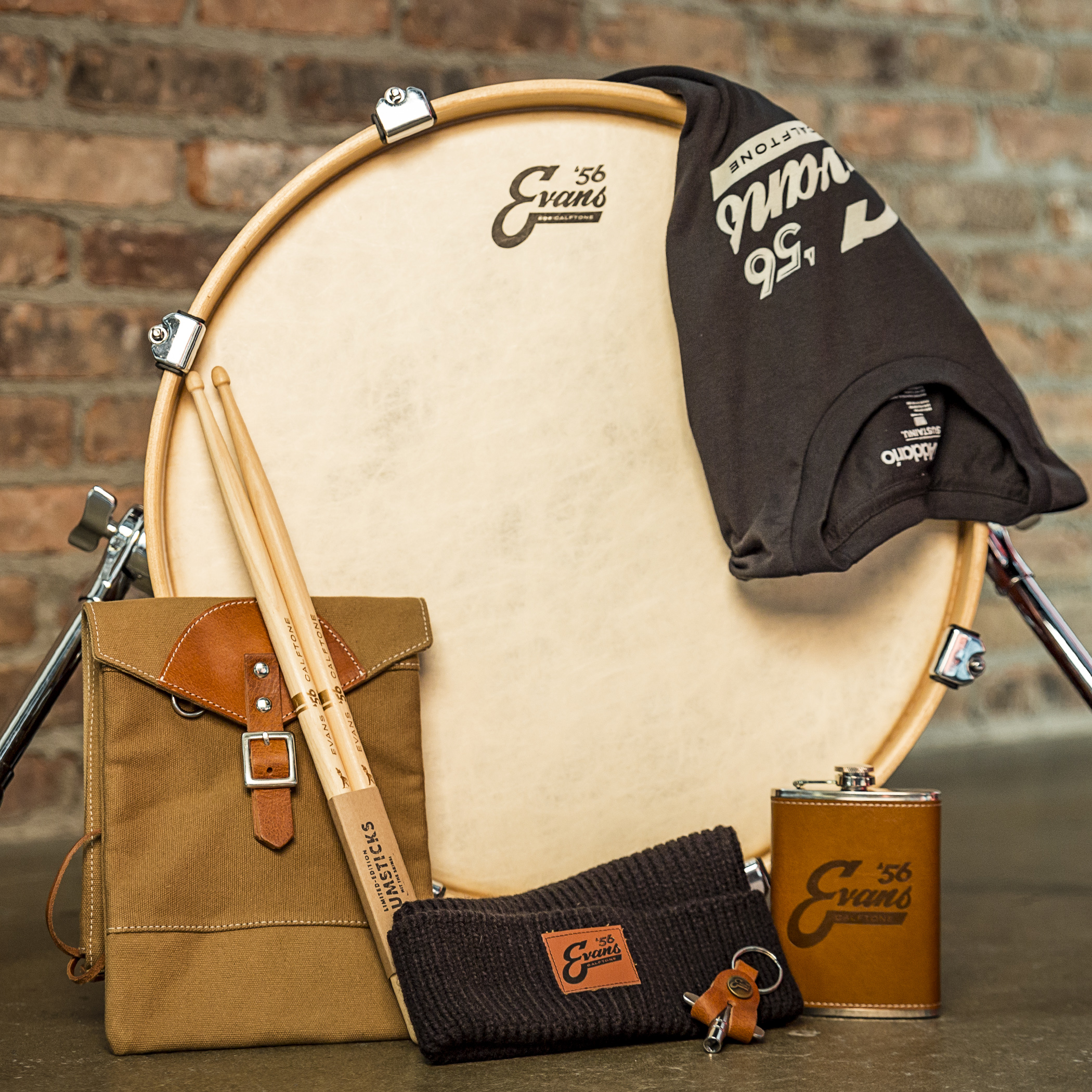As drummers, we are instinctively driven to explore new sound textures and rhythmic patterns to stimulate our musical creativity. In the analog world, we do so by playing drums of various construction, different types of sticks, mallets, brushes, heads, dampening methods, and so on. However, sometimes moving forward means reaching backward to our roots. When drums were first made in ancient times, animal hides were used for drum heads. Calfskin became quite commonly used as it was relatively cheap and available as a bi-product of food production. These heads had a particularly warm sound that many enthusiasts still prefer today. However, calf heads increased in price over time relative to modern plastic polymer heads (which came about in the 1950’s), and were more subject to temperature fluctuations (i.e., the reason why many vintage drums had light bulbs on the inside to warm them when cold). Calfskin heads, and even some wonderful kangaroo skin heads are available but remain pricey. Various drum head manufacturers recognized the need for a calfskin-like sound and set to work experimenting with synthetic alternatives. The Aquarian Vintage™ series and Remo Fiberskyn™ are the result of these efforts. D’Addario/Evans has also spent considerable time trying to satisfy those looking for that “vintage calfskin sound” by designing a unique synthetic hybrid, the Evans ’56 Calftone.
The Evans ’56 Calftone combines D’Addario's Level 360 Technology™ for optimal consistency, fit and tuning made from polyester films that are “blended with unique materials” to embody the look and feel of natural animal skin. While at PASIC 2016, I had the pleasure of chatting with Sergio Bonsignore, Product Manager at D’Addario/Evans, and he gave me more detail about these intriguing new drum heads.
How did the idea of the Evans ‘56 Calftone come about?
Sergio: “Evans was founded by Chick Evans back in 1956. This year marks the 60th year anniversary, so we wanted to go back to our roots and bring something that has a vintage kind of feel, like in the 50’s, but still with the modern technology and innovation that Evans is known for.”
Is there a target audience for these heads?
Sergio: “I think any drummer can find a use for these drum heads. However, I think the allure will be greatest for vintage guys who are using classic drums. They often have issues getting drum heads to fit; Level 360 will help with that scenario. They’re looking for that warm, calfskin type of sound; the full, earthy tone without the bright overtones of modern synthetic heads. The classic rock guys will tune them down low for a very fat sound and the jazz players will just naturally gravitate to their sound. The heads do have a wide range of application.”
Can you tell us a bit more about the design of these heads?
Sergio: “When we were designing these and experimenting with different materials, we recorded different prototype heads in our studio and compared them to a traditional calfskin product. We really wanted to get an authentic sound. We found that that the 12 mil base material on the bass drum heads gave us the right tone and feel we were looking for – a big boom and full sound. It’s a thicker material than we usually use on standard drum heads. We use a 10 mil base material for our G1 or EMAD heads. On the Evans ’56 Calftone snare and tom heads, we went with a thinner 7 mil base material. This way, when you’re tuning them a little bit higher, they don’t choke and have a nice full open tone with that warm, earthly timbre because of the fibrous material that’s laid over the top of the base material. It’s a compound material but they are made as a single ply, fused together.”
There are different versions of the Calftone heads for bass drums?
Sergio: “The ’56 Calftone bass drum heads come in three different configurations. We have a Standard Calftone that I just described (single ply, 12 mil). We have an EQ4 with the internal 10 mil overtone control ring which gives you more control. Then there’s the EMAD which gives you the ultimate amount of punch and control mainly for rock settings and larger bass drums where you want shorter sustain.”
During PASIC 2016, I attended several excellent clinics and master classes. Marko Djordjevic was playing a Natal kit with Evans ’56 Calftone heads. He played a variety of styles and all I can say is that the drums sounds pretty darn good from the front row – warm, punchy and focused – great low frequencies. Ed Soph, the grand master and educator also played Calftones on a Yamaha kit and with his wonderful touch, I could swear they were calfskin. You can check out some of the sound on YouTube for yourself:
Marko Djordjevic: https://www.youtube.com/watch?v=pYnppzZA-T4
Ed Soph & Ed Sisto: https://www.youtube.com/watch?v=pYnppzZA-T4
I am always trying different heads on my modern and vintage snares, as this adds to the sound palette of each drum. I put a set of the Evans ’56 Calftone heads on my late 1990’s birch Premier Genista 5-piece kit (my primary gigging set-up)…and was not disappointed. It was like playing calfskin, but with a bit more focus, response and attack. I especially loved the low frequencies that came out of my 22” bass drum (EMAD Calftone) and 16” floor tom. I also put a 14” Evans ’56 Calftone on one of my 5 X 14”, 1920’s scroll-engraved Ludwig Black Beauties. I often get uneven responses across an old calfskin head. This was not the case with the Calftone; it was very consistent and sounded quite warm. So overall, I’m really digging these heads. They met my expectations and more, delivering great sound on both my modern Genista kit and vintage Black Beauty. I expect to get questions about head durability. I play a variety of music and will be further checking these out at all volumes, pounding them heartily. Check with me in a bit to hear how they’re holding up and please share your Calftone experiences with me at fallendrummer@mac.com - love to hear from you!
Next up on the bench is an Evans UV1 coated snare head – currently experimenting with it on a luscious Red Rock Turpentine wood stave snare from Australia. Stay tuned… (no pun intended)
Many thanks to Sergio Bonsignore for his time and assistance in writing this article, and Nick Barbieri for turning me on to the Calftones!








